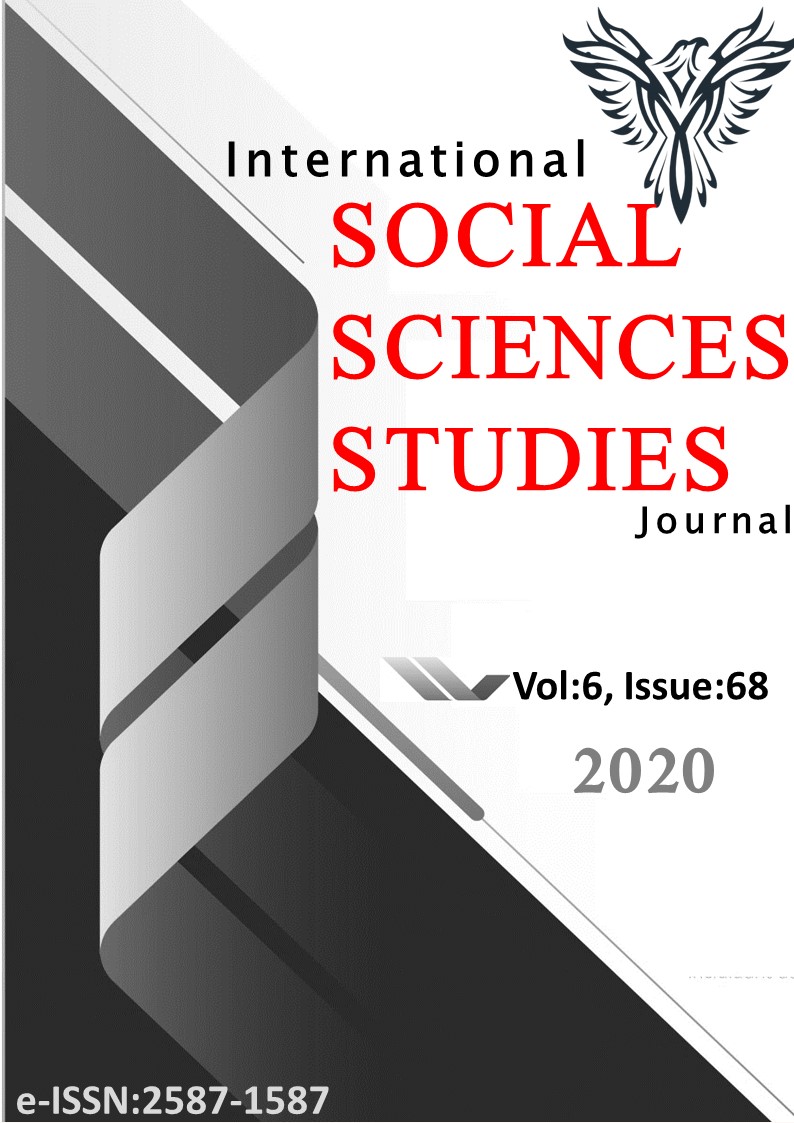Author :
Abstract
Koyunoğlu Müzesi, ülkemizin İç Anadolu bölgesinde yer alan şehirlerimizden birisi olan Konya’da bulunmaktadır. Müzesi ve kütüphanesi ile birlikte Konya Büyükşehir Belediyesi bünyesinde hizmet veren müze, ülkemizin önemli özel müzelerinden de bir tanesidir. Müze adını kurucusu olan Ahmet Rasih İzzet Koyunoğlu’ndan almaktadır. Koyunoğlu müze koleksiyonunda yer alan eserlerin büyük bölümü de Ahmet Rasih İzzet Koyunoğlu’nun yaşamı boyunca topladığı çeşitli eserlerden meydana gelmektedir. Bu bağlamda; Tarih öncesi dönemden Cumhuriyet dönemine kadar arkeolojik, etnografik ve sikkelerden oluşan çok zengin ve ünik eserlere ev sahipliği yapan Koyunoğlu Müzesi, savaş aletleri konusunda da önemli bir koleksiyona sahiptir. Koyunoğlu Müzesi’ndeki savaş aletlerini ele alan araştırma projesinin bir bölümünü oluşturan bu çalışmada, müze sergi salonlarında ve deposunda yer alan 24 adet eser incelenmiştir. İncelenen bu eserlerin bir bölümü saldırı diğer bölümü ise savunma amaçlı olarak kullanılan objelerdir. Saldırı amaçlı incelenen aletler balta/teber, gürz ve keser iken savunma amaçlı incelenen aletler ise kalkanlar ve miğferdir. Çalışmamızda tamamına yakını Osmanlı dönemine tarihlenen bu eserler arasında 12 balta/teber, 2 keser, 5 gürz, 4 kalkan ve 1 miğfer yer almaktadır. Demir, bronz ve pirinç gibi çeşitli malzemelerden çoğunlukla döküm üretilen bu eserlerin bazen yalnız bir malzeme bazen de birkaç malzemenin birlikte kullanılmasıyla imal edildiği görülmektedir. Saldırı aletlerinin sap kısımlarında ahşap ve bazen de demir malzeme kullanılmıştır. Bazı eserlerde ise çok az da olsa deri kullanımıyla da karşılaşılmaktadır. Bu saldırı ve savunma aletleri kullanıldıkları toplum ve kullanım amacına yönelik olarak farklı form ve süsleme özellikleri göstermektedir. Bu eserler 20. Yüzyılın başlarından itibaren ateşli silahların artmasıyla birlikte kullanım amaçlarını kaybetmiştir. Saldırı ve savunma amaçlı kullanımın yerine gündelik ihtiyaçları karşılama yâda litürjik olarak kullanımının daha ön plana çıktığını söylemek mümkündür. Eserlerin üzerinde çeşitli süslemelere yer verilmiştir. Kazıma tekniğindeki bu süslemelerin arasında en sık kullanılan motifler geometrik formlu üçgenler, daireler ve zikzaklardır. Geometrik formların yanında bitkisel formlu yapraklar ve çiçekler ayrıca az sayıda da olsa figüratif bezeme ve yazıya da yer verilmiştir. Ülkemizdeki müzeler ve özel koleksiyonlarda çok sayıda saldırı ve savunma aletleri bulunmasına rağmen bu konuda yapılan çalışmalar yeterli seviyede değildir. Bu konuda yapılacak çalışmaların artması ile Anadolu’nun Türk dönemindeki askeri tarihsel zenginliğinin tespiti ve tanıtımı açısından da oldukça önemlidir. Bu bağlamda, Koyunoğlu Müzesinde yer alan bir grup saldırı ve savunma aletlerini konu alan bu çalışmanın alana katkı sağlaması ve daha sonraki dönemlerde gerçekleştirilecek araştırmalara yardımcı olması hedeflenmektedir.
Keywords
Abstract
Koyunoğlu Museum is located in Konya, one of our cities located in the Central Anatolia region of our country. The museum, which serves within the Konya Metropolitan Municipality with its museum and library, is one of the important private museums of our country. The museum is named after its founder, Ahmet Rasih İzzet Koyunoğlu. The majority of the works in the Koyunoğlu museum collection consist of various works collected by Ahmet Rasim İzzet Koyunoğlu throughout his life. In this context; The Koyunoğlu Museum, which hosts very rich and unique works consisting of archaeological, ethnographic and coins from the prehistoric period to the Republic period, also has an important collection in terms of war tools. In this study, which is part of the research project that deals with the fighting tools in the Koyunoğlu Museum, 24 works in the museum exhibition halls and storage room were examined. Some of these studied objects are objects used for attack and the other parts are used for defense purposes. The tools examined for offensive purposes are axe, mace and adzes / hammers, while the tools examined for defense are shield and helmet. In our study, among these works, almost of which are dated to the Ottoman period, there are 12 axes, 2 adzes, 5 maces, 4 shields and 1 helmet. It is observed that these works, which are mostly cast from various materials such as iron, bronze and brass, are sometimes produced by using only one material and sometimes several materials together. Wooden and sometimes iron materials are used in the handle parts of the attack tools. The use of leather is also encountered in some works. These offensive and defensive instruments show different forms and ornamentation characteristics for the society in which they are used and their purpose of use. These works have lost their intended use with the increase of firearms since the beginning of the 20th century. It is possible to say that it is more prominent to meet daily needs or to use liturgical rather than attack and defense purposes. Various decorations are placed on the works. Among these ornaments in the scraping technique, the most frequently used motifs are geometric form triangles, circles and zigzags. In addition to the geometric forms, leaves and flowers with vegetal form are also included, though a small scale of figurative decoration and writing. Although there are many offensive and defensive instruments in museums and private collections in our country, the studies on this subject are not sufficient. It is also very important for the identification and promotion of the military historical wealth of Anatolia in the Turkish period with the increase of studies to be done on this subject. In this context, it is aimed to contribute to the field of this study, which is about a group of offensive and defensive instruments in the Koyunoğlu Museum and to help the research to be carried out in later periods.
